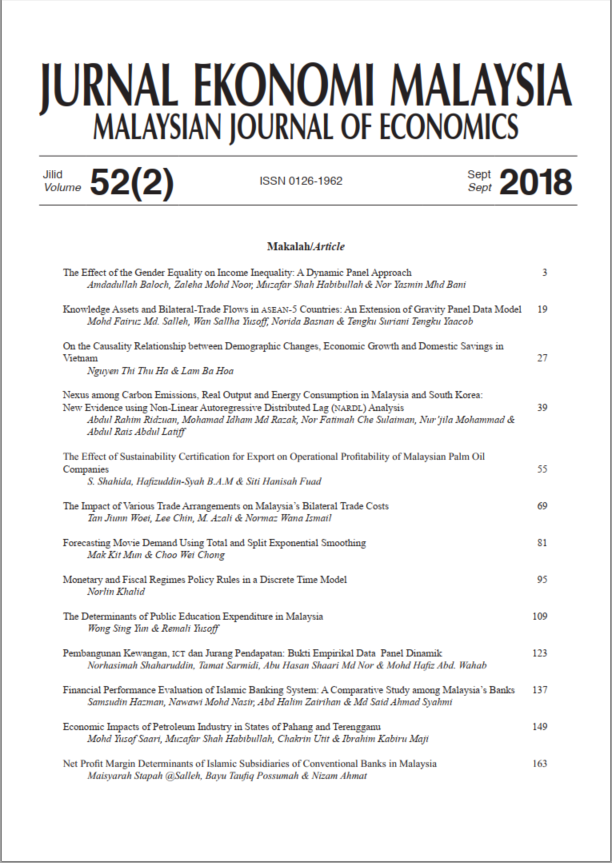Jurnal Ekonomi Malaysia
52 (2) 2018 109 – 122
Faculty of Business Economics and Accountancy
Universiti Malaysia Sabah
Jalan UMS
88400 Kota Kinabalu Sabah
MALAYSIA
Faculty of Business Economics and Accountancy
Universiti Malaysia Sabah
Jalan UMS
88400 Kota Kinabalu Sabah
MALAYSIA
Abstract
The aim of this paper is to investigate the determinants of the public education expenditure in Malaysia during the period of 35 years from 1982 to 2016. This study intends to address the existing research gaps within Malaysia context that failed to receive much attention in the past. The determinants of education expenditure will be modeled using time series data within the autoregressive distributed lag (ARDL) Bound Testing approach and Error Correction Model (ECM) method. The empirical findings from this study identified the real gross domestic product growth rate (GDP), unemployment rate (UNEM), inflation rate (INF) and working age population (POP2) as the long run determinants of public education expenditure. Findings from the ARDL Bound Testing result further supported the Keynesian Counter- Cyclical theory as implied by the negative relationship between economic growth and public education expenditure in the long run. The short run analysis through ECM demonstrated that fluctuations in education expenditure was sensitive to the real gross domestic product growth rate (D(GDP)), unemployment rate (D(UNEM)), population of age less than 15 (D(LNPOP1)), and population of age greater than 64 (D(LNPOP3)). This study further recommends that the policy makers to play the role in responding to the economic conditions and demands of the society in their decision-making of the future allocation.
Keywords
Bibliography
@article{yun2018determinants,
title={The Determinants of Public Education Expenditure in Malaysia},
author={Yun, Wong Sing and Yusoff, Remali},
journal={Jurnal Ekonomi Malaysia},
volume={52},
number={2},
pages={109—122},
}
Receive updates when new articles are published.


